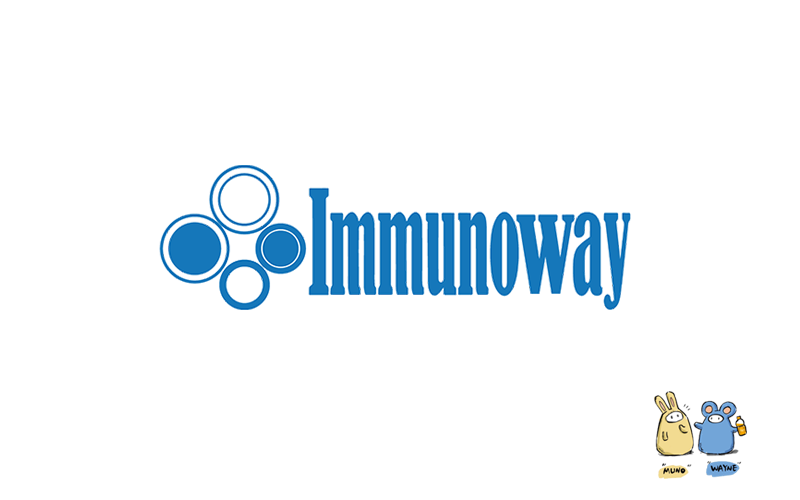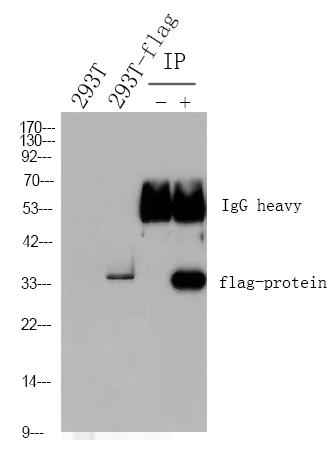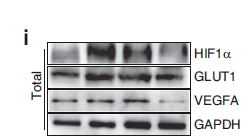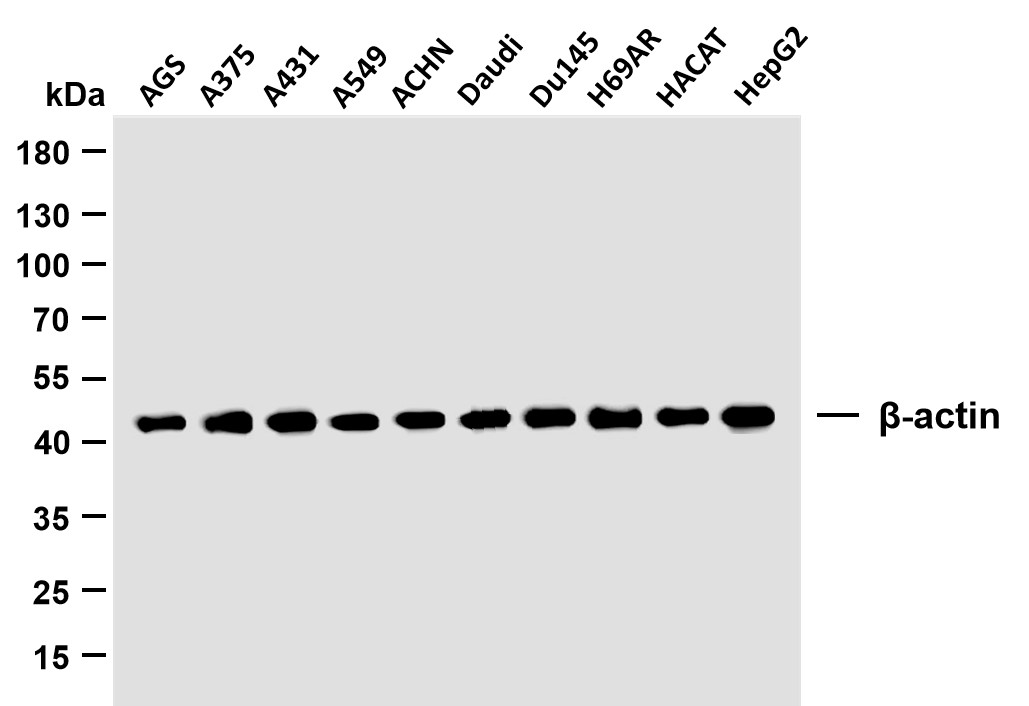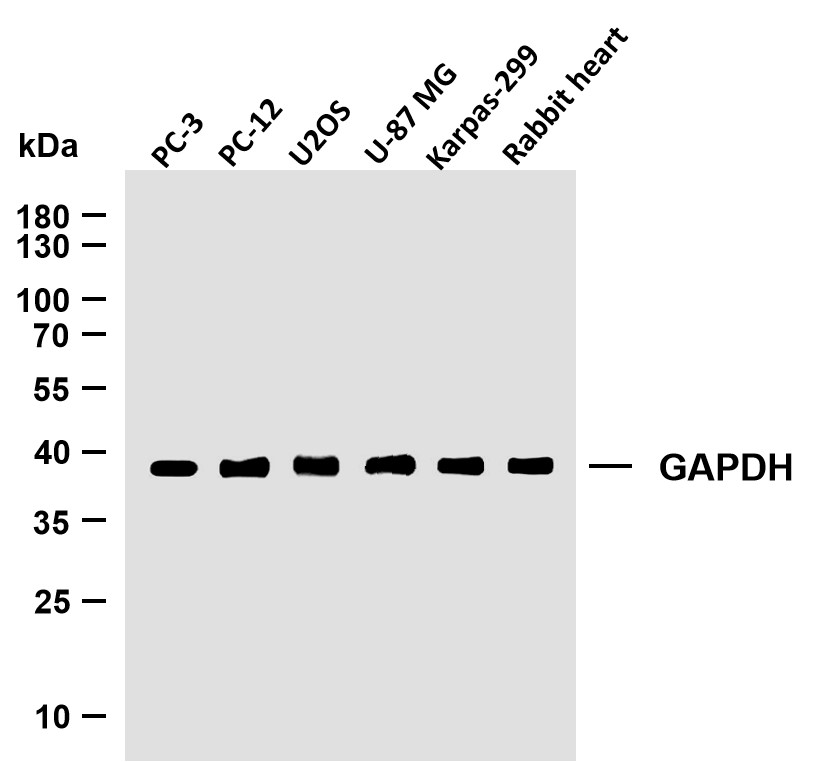
Catalog: YN0994
Size
Price
Status
Qty.
200μL
$450.00
In stock
0
100μL
$280.00
In stock
0
40μL
$150.00
In stock
0
Add to cart


Collected


Collect
Main Information
Target
NU214
Host Species
Rabbit
Reactivity
Human, Mouse
Applications
WB, ELISA
MW
229kD (Observed)
Conjugate/Modification
Unmodified
Detailed Information
Recommended Dilution Ratio
WB 1:500-2000; ELISA 1:5000-20000
Formulation
Liquid in PBS containing 50% glycerol, and 0.02% sodium azide.
Specificity
NU214 Polyclonal Antibody detects endogenous levels of protein.
Purification
The antibody was affinity-purified from rabbit antiserum by affinity-chromatography using epitope-specific immunogen.
Storage
-15°C to -25°C/1 year(Do not lower than -25°C)
Concentration
1 mg/ml
MW(Observed)
229kD
Modification
Unmodified
Clonality
Polyclonal
Isotype
IgG
Related Products
Antigen&Target Information
Immunogen:
Synthesized peptide derived from human protein . at AA range: 230-310
show all
Specificity:
NU214 Polyclonal Antibody detects endogenous levels of protein.
show all
Gene Name:
NUP214 CAIN CAN KIAA0023
show all
Protein Name:
Nuclear pore complex protein Nup214 (214 kDa nucleoporin) (Nucleoporin Nup214) (Protein CAN)
show all
Background:
nucleoporin 214(NUP214) Homo sapiens The nuclear pore complex is a massive structure that extends across the nuclear envelope, forming a gateway that regulates the flow of macromolecules between the nucleus and the cytoplasm. Nucleoporins are the main components of the nuclear pore complex in eukaryotic cells. This gene is a member of the FG-repeat-containing nucleoporins. The protein encoded by this gene is localized to the cytoplasmic face of the nuclear pore complex where it is required for proper cell cycle progression and nucleocytoplasmic transport. The 3' portion of this gene forms a fusion gene with the DEK gene on chromosome 6 in a t(6,9) translocation associated with acute myeloid leukemia and myelodysplastic syndrome. Alternative splicing of this gene results in multiple transcript variants encoding different isoforms. [provided by RefSeq, Dec 2015],
show all
Function:
Disease:A chromosomal aberration involving NUP214 is found in a subset of acute myeloid leukemia (AML); also known as acute non-lymphocytic leukemia. Translocation t(6;9)(p23;q34) with DEK. It results in the formation of a DEK-CAN fusion gene.,Disease:A chromosomal aberration involving NUP214 is found in some cases of acute undifferentiated leukemia (AUL). Translocation t(6;9)(q21;q34.1) with SET.,Disease:Defects in NUP214 may be a cause of breast cancer.,Domain:Contains FG repeats.,Function:May serve as a docking site in the receptor-mediated import of substrates across the nuclear pore complex.,PTM:Probably glycosylated as it reacts with wheat germ agglutinin (WGA).,subcellular location:Cytoplasmic filaments.,subunit:Homodimer. Interacts with DDX19, NUP88, XPO1 and XPO5.,tissue specificity:Expressed in thymus, spleen, bone marrow, kidney, brain and testis, but hardly in all other tissues or in whole embryos during development.,
show all
Cellular Localization:
Nucleus, nuclear pore complex . Cytoplasmic side of the nuclear pore complex. .
show all
Tissue Expression:
Expressed in thymus, spleen, bone marrow, kidney, brain and testis, but hardly in all other tissues or in whole embryos during development.
show all
Research Areas:
>>Nucleocytoplasmic transport ;
>>Amyotrophic lateral sclerosis
>>Amyotrophic lateral sclerosis
show all
Signaling Pathway
Reference Citation({{totalcount}})
Catalog: YN0994
Size
Price
Status
Qty.
200μL
$450.00
In stock
0
100μL
$280.00
In stock
0
40μL
$150.00
In stock
0
Add to cart


Collected


Collect
Recently Viewed Products
Clear allPRODUCTS
CUSTOMIZED
ABOUT US
Toggle night Mode
{{pinfoXq.title || ''}}
Catalog: {{pinfoXq.catalog || ''}}
Filter:
All
{{item.name}}
{{pinfo.title}}
-{{pinfo.catalog}}
Main Information
Target
{{pinfo.target}}
Reactivity
{{pinfo.react}}
Applications
{{pinfo.applicat}}
Conjugate/Modification
{{pinfo.coupling}}/{{pinfo.modific}}
MW (kDa)
{{pinfo.mwcalc}}
Host Species
{{pinfo.hostspec}}
Isotype
{{pinfo.isotype}}
Product {{index}}/{{pcount}}
Prev
Next
{{pvTitle}}
Scroll wheel zooms the picture
{{pvDescr}}







